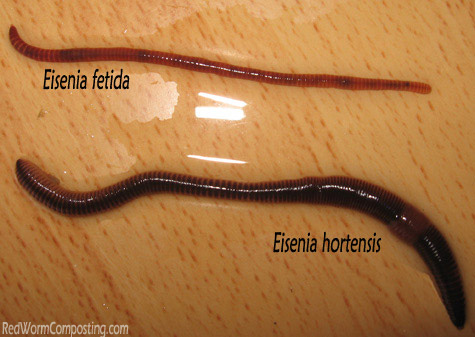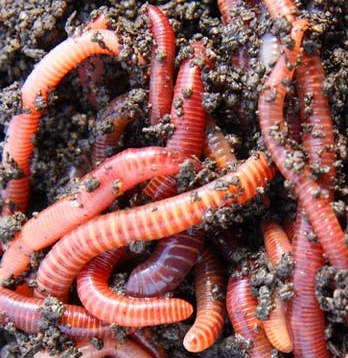More About Where To Find Red Wigglers
Table of ContentsGetting The Where To Find Red Wigglers To WorkNot known Details About Where To Find Red Wigglers Get This Report about Where To Find Red WigglersThe 20-Second Trick For Where To Find Red WigglersExcitement About Where To Find Red WigglersWhere To Find Red Wigglers for Beginners
For ideal results, you intend to shoot for regarding 60-70% wetness degree. The easiest examination for this is to press a handful as difficult as you can. At the best wetness levels which is just under 70% that handful need to hardly produce one decrease of liquid. pH in a worm bin is rather simple to preserve.
The Indian Blue is starved, but additionally likes a warmer climate and it also shows a tendency to run away the bin. The red wiggler is a hardy worm and isn't as picky regarding its climate. I like to call it the Ford Taurus of vermicomposting worms; you will not boast to your hardcore composting pals that you own them, however they will certainly offer you well.
As Faucet demonstrated, an angler can do an excellent bargain to make a worm much more enticing.
Where To Find Red Wigglers Fundamentals Explained
I think you will too if you try them. The smaller the trout stream, the better worms work is an axiom that hasn't changed in the 100-plus years considering that Perry created his write-up. Anglers of his period merely stuck their weak fishing pole via alder tangles and went down a heavy worm right into a deep opening.
Early morning is prime feeding time, and the lightweight lure's sluggish descent leaves 5 inches of wriggling healthy protein in complete view for rather a while. After you've made the cast, keep the bail open and placed the pole in a forked stick. The line will certainly diminish the pole in sluggish loops as the worm works out, but much more usually than not the slow-moving loopholes will certainly end up being a blur, and the morning will all of a sudden get rather interesting.
I usually make use of an entire 'crawler, prefer marabou dressing, and drop the pole for 2 or 3 seconds when I obtain a hit.
If it's there, set the hook with a sweep instead than a jerk. When in a while you'll discover on your own hooked to those sluggish, hearty pulls, and feel the weight of a wonderful walleye.
More About Where To Find Red Wigglers
When the hefty walleyes carry on to the big-water shoals in the late summertime, attempt pursuing them with a bucktail jig and a 1-inch pinch of nightcrawler. The bait covers the hook point, deflects weeds, and supplies a taste of victim. With absolutely nothing dangling or flapping, it stays secure no matter existing, casts, or enthusiastic panfish.
Whether you're wading or fishing from a watercraft, wandering worms is among the fantastic searching methods for larger rivers. For trout, a spade-dug, 4-inch garden worm is the best size; for bass, walleyes, and steelhead, a nightcrawler may be a better option. The trick is to drift the bait with feeding and holding areas since fish in existing are not going to chase after down the lure, as they might in still water.
Fish the transitions: mouths of tributaries, bank-side slicks, and the sides of huge pools. His rule uses to any number of angling maneuvers, consisting of the matter of including a piece of worm to a damp fly.

Get This Report about Where To Find Red Wigglers
Load it with shredded paper, leaves, peat moss, and soil. Moisten lightly. Cover and allow rest for a week. Include a few hundred worms and feed them 2 times a week. Keep the bed linen wet but not damp. On the food selection: lettuce, fruit and vegetable waste, and the occasional nongreasy extra.
Just like veggie scraps, you can take your utilized coffee premises and include them to a worm box. Worms enjoy consuming coffee premises.
When the hefty walleyes carry on to the big-water shoals in the late summer, try going after home them with a bucktail jig and a 1-inch pinch of nightcrawler. The lure covers the hook point, disperses weeds, and offers a taste of victim. With nothing dangling or flapping, it stays safe despite existing, casts, or enthusiastic panfish.
A Biased View of Where To Find Red Wigglers
Whether you're wading or fishing from a boat, drifting worms is just one of the wonderful looking approaches for larger rivers. Where To Find Red Wigglers. For trout, a spade-dug, 4-inch garden worm is the best size; for bass, walleyes, and steelhead, a nightcrawler may be a better choice. The trick is to wander the lure with feeding and holding areas due to the fact that fish in present are not going to chase after down the lure, as they click this link could in still water
Strikes will come as a sharp yank rather than a pull or rap. Fish the transitions: mouths of tributaries, bank-side slicks, and the sides of huge pools. As the late Ed Zern, Area & Stream's wonderful humorist, once placed it: Anglers are birthed honest however they get over it. His dictum uses to any variety of angling maneuvers, including the issue of adding an item of worm to a wet fly.
Elevating your own lure means you can slip out of the residence and struck the pond prior to Mother comes homejust like in the old days. Right here's just how to keep a worm box: Cut a sheet of CDX-grade plywood, which is made with water-resistant adhesives, to your dimensions. Accomplish with each other and drill a loads 12-inch openings in all-time low for water drainage.
Where To Find Red Wigglers Fundamentals Explained
Load it with shredded paper, leaves, peat moss, and dirt. Moisten gently. Cover and allow rest for a week. Include a couple of hundred worms and feed them 2 times a week. Maintain the bed linen damp however not damp. On the menu: lettuce, fruit and veggie waste, and the periodic nongreasy surplus.
Similar to veggie scraps, you can take your made use of coffee premises and add them to a worm box. Worms love consuming coffee grounds. With the right conditions and wet, healthy dirt, worms can reside in a container of dust for around three weeks. Store out of straight sunshine and maintain at a temperature level in between 50 and 80 degrees.